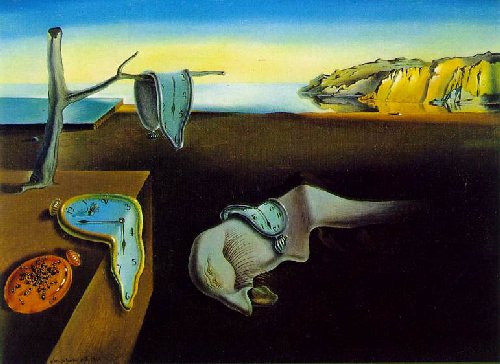man in the mirror

there are some things wikipedia may never know. like, for instance, how the refrain ‘billie jean is not my lover’ was always sung 27 times by back-up singers before michael jackson struck his iconic pose with a black fedora on stage.
there are other things most people will never know. like what doing the moonwalk right feels like, bathed in the glow of a spotlight, half-obscured by the smoke of fog machines, to the sound of wild applause.
these are things only a michael jackson impersonator knows.
i know because, between 1990 and 1996, i did what not many teenagers looking for a bigger allowance chose to do. i wore make-up, pulled on a white glove and danced across maharashtra and gujarat. my parents were, understandably, not sure what to make of that decision, but what i earned during those years helped pay for my textbooks. the income from dancing alone helped me get my masters’ degree. i could have opted for something simpler but, given a chance, i’d do it all over again.
for seven years, at schools, fairgrounds, ganeshotsav mandals, bollywood-themed events, college festivals, the odd birthday — even a wedding! — i wore that sequinned glove and danced to the hits of the king of pop. by the time i cut my waist-length hair and opted for a safer (if mundane) career, it seemed as if jackson’s streak of mega-stardom had run its course. over the next decade, that part of my life faded to the hazy place where memories go, and stayed there until a few weeks ago.
in the early hours of june 26, 2009, my life as a former impersonator came shrieking back to mind as the world’s news channels went haywire. jackson was no more, and nothing felt the same. for the next 48 hours, i stumbled through recollections of hours spent practicing his every move before the slim mirror of a steel godrej cupboard. with the pause button of a vcr as guide, i remembered pushing my body to do things jackson’s frame was built to do. i remembered those spotlights going on though, and crowds shrieking hysterically, making all that exhausting practice worthwhile.
how did this sub-culture of celebrity impersonators come into being anyway? i assumed one could lay the blame for much of it at the feet of elvis presley. even before he left the building in 1977, his look-alikes had started to appear across america. the idea of imitation was as old as time itself, but the sheer number of people attracted to it as a profession was new. from small town talent competitions to television appearances, the statistics increased with time, as if mirroring the rising status of their deceased original. 25 years after his death, some estimates placed the number of presley impersonators at a staggering 30,000 worldwide.
by the time i finally learnt to bust a move then, the idea of tribute artistes was fairly appealing. faced with the monotony of a regular job as an intern at some media firm, i picked bright lights and fog machines instead. in doing so, i opened the doors to a strange new world populated by folk dancers, ventriloquists, mimicry artistes, stuntmen, and the odd tightrope walker.
what do i remember of those times? primarily, dressing rooms. they were always the most interesting places to be, both before and after a show. some were large, with artistes given enough space to change or rehearse. others were mere cubby holes, with everyone taking turns to do their make-up. that was where the magicians showed off new tricks, where mimicry artistes used their own voices for a few rare moments, where johnny ‘the one man band’ carefully attached six different instruments to various parts of his body. i also remember how the smoke from fog machines always smelled like lemonade.
in a paper titled ‘the king of white trash culture: elvis presley and the aesthetics of excess,’ published in 1996, professor gael sweeney of syracuse university once described the cult of elvis impersonation as a ‘spectacle of the grotesque.’ she was partly right. she also put forth the notion that some impersonators believed they were ‘chosen’ by presley to continue his work. she argued that a number of them didn’t merely perform like elvis, but ‘lived elvis’ — not just dressing like him, but practicing ‘being him’ at all hours. in that context, jackson’s lyric for billie jean was strangely apt: ‘be careful what you do, because the lie becomes the truth.’
much of what i saw backstage, while working as an impersonator, could lend a small amount of credence to sweeney’s paper. the ease with which an amitabh bachchan impersonator could silence an audience of thousands, for example, made it easier to understand the power that true celebrity status conveyed on those whom fortune had smiled upon.
there were many pros to that choice of career, but also a few cons. edward moss, one of the more famous american impersonators of jackson, could vouch for that. he began by balancing a job at mcdonald’s with dancing on the side. eventually, he performed worldwide and scored a few film projects (scary movie, for one) as a stand-in for the star. not everyone was happy though. a number of jackson’s fans accused moss of mocking their idol, while some impersonators said he simply exploited the bad publicity jackson routinely attracted. clearly, be it stars or their impersonators, they couldn’t please everyone.
for now, i fail to grasp the idea of a world without michael jackson. what will his look-alikes do? who will the tabloids pick on? i look back at my years as an impersonator with great fondness. i look forward to new generations of fans dropping their jaws when exposed to archival footage of jackson dancing. most of all, i look forward to sitting beside these new converts and saying, “i used to do that.”

